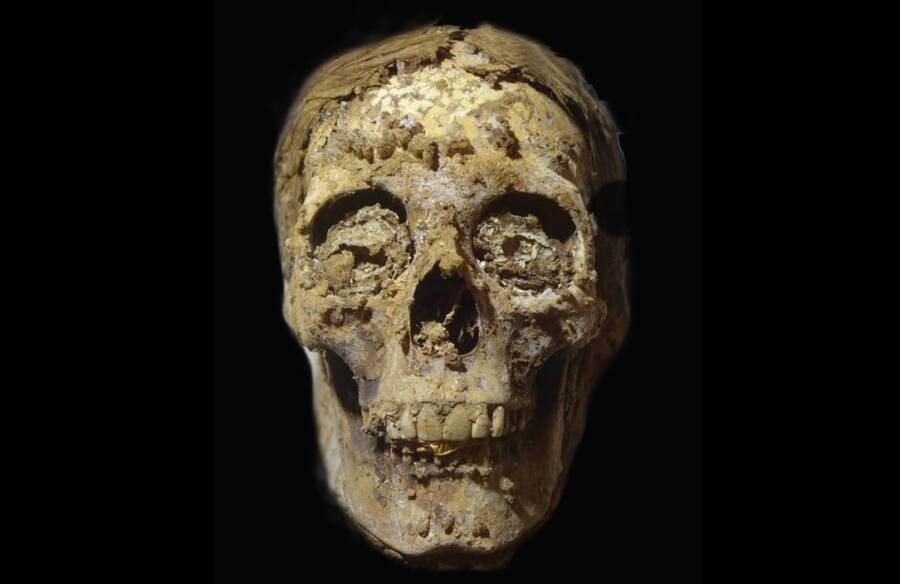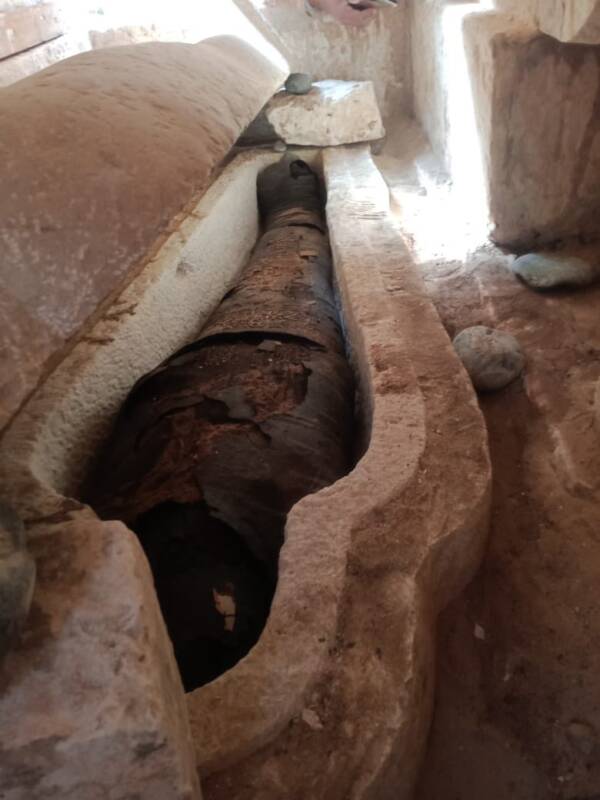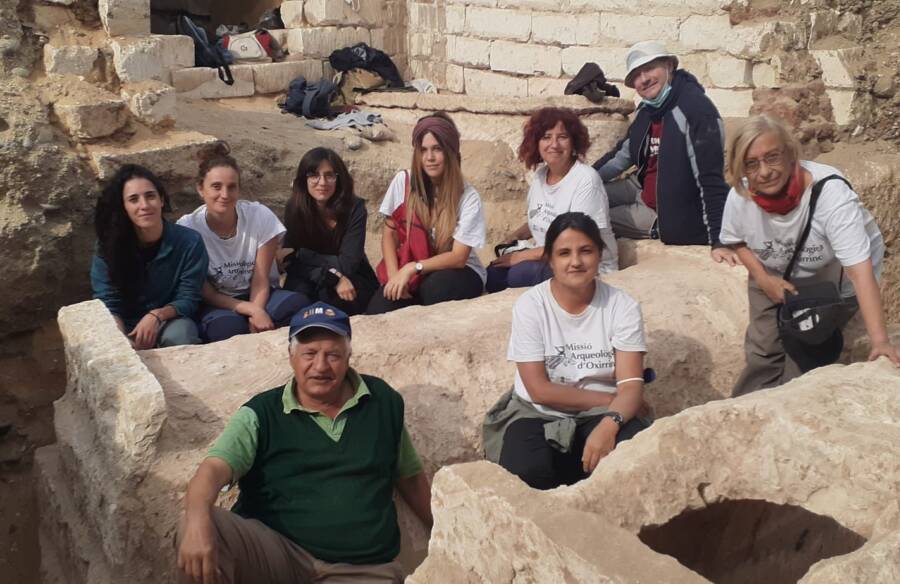Archaeologists also uncovered 402 funerary figurines, amulets, and scarabs from one of the tombs, which was perfectly preserved because it hadn’t been opened in 2,500 years.
Egypt Ministry of Tourism and AntiquitiesOne of the ancient skulls discovered with a golden tongue placed inside its mouth.
It’s no secret that untold treasure lies beneath the city of El-Bahnasa, Egypt. An archaeological mission from Spain has now excavated the site for 30 years and found many tombs from different dynasties and papyrus texts that still puzzle experts. And last week, they unearthed two 2,500-year-old mummies with golden tongues.

According to The Times of Israel, the two mummies, a man and a woman, were each laid to rest in a limestone sarcophagus in what was then called Oxyrhynchus. They died around 525 B.C. at the tail-end of the Saite dynasty, which was the last time native Egyptians reigned over their kingdom before the Persian conquest in the 6th century B.C.
The Ministry of Tourism and Antiquities said golden tongues allowed the dead to speak to Osiris, the god of the underworld who judged travelers to the afterlife. While the 402 funerary figurines, amulets, and scarabs found within the tombs were also stunning, the state of the male sarcophagus captivated experts the most.
“This is very important because it’s rare to find a tomb that is totally sealed,” said excavation director Esther Pons Melado on Sunday.

Egypt Ministry of Tourism and AntiquitiesOne of the 2,500-year-old limestone sarcophagi discovered inside the tomb.
Go ad-free and become a member today
According to Egypt Today, the Oxyrhynchus dig site is situated in the Minya Governorate about 100 miles from the capital of Cairo. Although the woman’s tomb appeared to have been previously opened, said Secretary-General of the Supreme Council of Antiquities Mustafa Waziri, the man’s tomb and sarcophagus were entirely untouched.
Excavation co-director Maite Mascort confirmed that the second tomb “was completely closed and sealed, and the mission opened it for the first time during excavations.” That mission was based in the University of Barcelona and consisted of 14 experts from Spain, Italy, France, the United States, and Egypt.
When the team opened the unsealed tomb for the first in history, researchers found an exceptionally well-preserved male mummy and four canonic jars that were used to retain its internal organs. It also held hundreds of figurines made of an earthenware called faience, as well as one scarab and various amulets.
These figurines resembled the god Horus, an Ancient Egyptian deity typically represented as a man with the head of a falcon who was tasked to protect the monarchy. Depictions of hearts and feathers adorned some of these artifacts, as well, while spherical and tubular pieces of faience had covered the body.
Go ad-free and become a member today
Egypt Ministry of Tourism and AntiquitiesResearchers discovered 402 funerary figurines resembling the ancient god Horus.
“One of the pots contained 402 Ushabti figurines made of faience, a set of small amulets and green beads,” said Hassan Amer, a professor in the Department of Greco-Roman Archaeology at Cairo University who co-directed the excavations.
The woman’s sarcophagus had been unsealed in ancient times and plundered, although archaeologists did recover a well-preserved stone amulet and an “excellent quality headrest.” Both limestone structures had been situated beside each other, with the golden tongues still found inside the mouths of one well-preserved mummy and another that had largely decayed.
Researchers also found three other golden tongues outside the tombs that dated to Ancient Egypt’s Roman period, which began in 30 B.C.
Go ad-free and become a member today
According to Euro Weekly News, the research team decided to keep the mummified viscera contained within the funerary jars inside. Historians have long concluded that personal items contained within sarcophagi were placed there to accompany the dead in the afterlife.

Egypt Ministry of Tourism and AntiquitiesThe international research team consisted of 14 experts from Egypt, Italy, Spain, France, and the United States.
Ultimately, the team found the sarcophagi themselves most remarkable of all. While the rarity of uncovering an unsealed coffin from Ancient Egypt was stunning on its own merits, the fact that the Saite dynasty tombs architecturally differed from any previously found at El-Bahnasa made this dig an invaluable success.
Esther Pons Melado and Maite Mascort have uncovered a lot since 1992, when they first began digging at Oxyrhynchus archaeological site, from Roman-era tombs with human remains and Byzantine crypts to the gold leaf-adorned mummies found last week.
Go ad-free and become a member today
Their current archaeological mission is set to end for the season on Dec. 10, 2021, but they’ll return again next year to uncover more fascinating Egyptian history.





